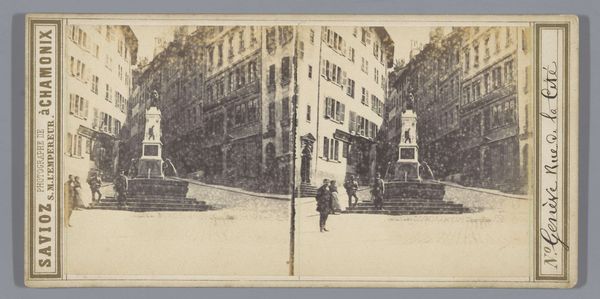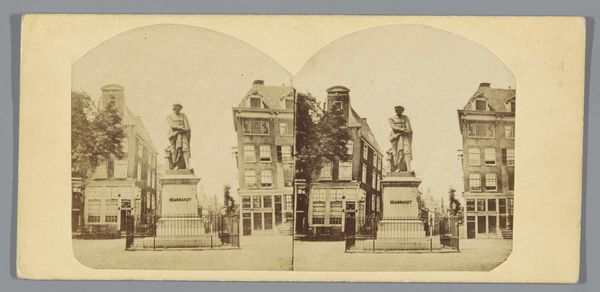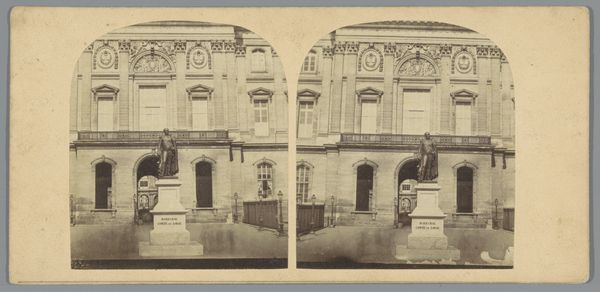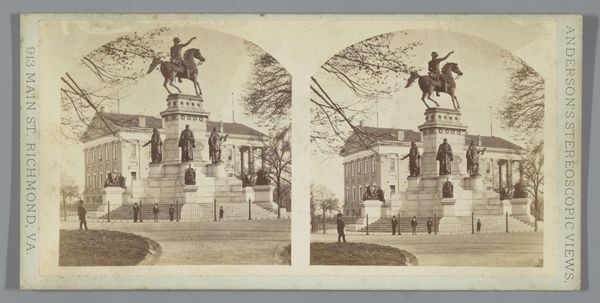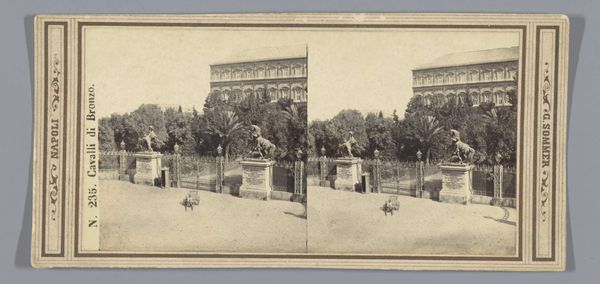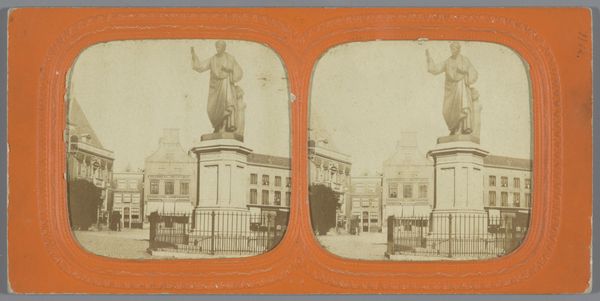
print, photography, sculpture
# print
#
landscape
#
photography
#
sculpture
#
realism
Dimensions: height 75 mm, width 150 mm
Copyright: Rijks Museum: Open Domain
Curator: Let's turn our attention to "Sculptuur in Bremen," a stereograph card estimated to date between 1873 and 1890, using printmaking, and photography, to show a sculpture. Editor: Ooh, instantly, I feel a sense of wistful solitude. The statue, cloaked in what seems like classical robes, stands solemnly, while wiry, bare trees frame the background like a theatrical set waiting for spring. It's hauntingly beautiful, don't you think? Curator: Absolutely. This kind of photography played a vital role in disseminating images of public art and monuments, allowing viewers to experience culture from afar. Focusing on sculpture invites discussions about power, commemoration, and cultural values as represented in public spaces during this era. Think about what was being celebrated, who was being remembered, and conversely, who or what was being left out. Editor: And in stereoscopic form, you have the added effect of dimension! It attempts to pull you right there. This particular one has an element that really resonates. I mean, the detail is pretty wonderful; you can even see slight wear and tear of age of the piece itself. The whole thing has a palpable sense of history. Curator: The realism style prevalent in photography mirrors similar artistic movements throughout the Western world. In looking at photography we should consider industrialization, urbanization, and political shifts in 19th century Germany as contexts for a heightened focus on documentation and visual representation of "reality" including both urban and rural representations. Editor: Well, it succeeds wonderfully in that regard. Thinking of a monument captured like this feels strangely modern, almost like a character study. I keep wanting to reach out and dust it off, listen for what it might tell me about the old city of Bremen. The city which no longer stands. Curator: Yes, and considering the state of flux across much of Germany and Bremen during that period we are reminded to question whose perspective or what particular context is considered reality? I appreciate your evocative sensibility, helping bring broader understanding to the work of art. Editor: As do I yours. In the end, isn't all art just a ghostly conversation across time, begging to be overheard?
Comments
No comments
Be the first to comment and join the conversation on the ultimate creative platform.
